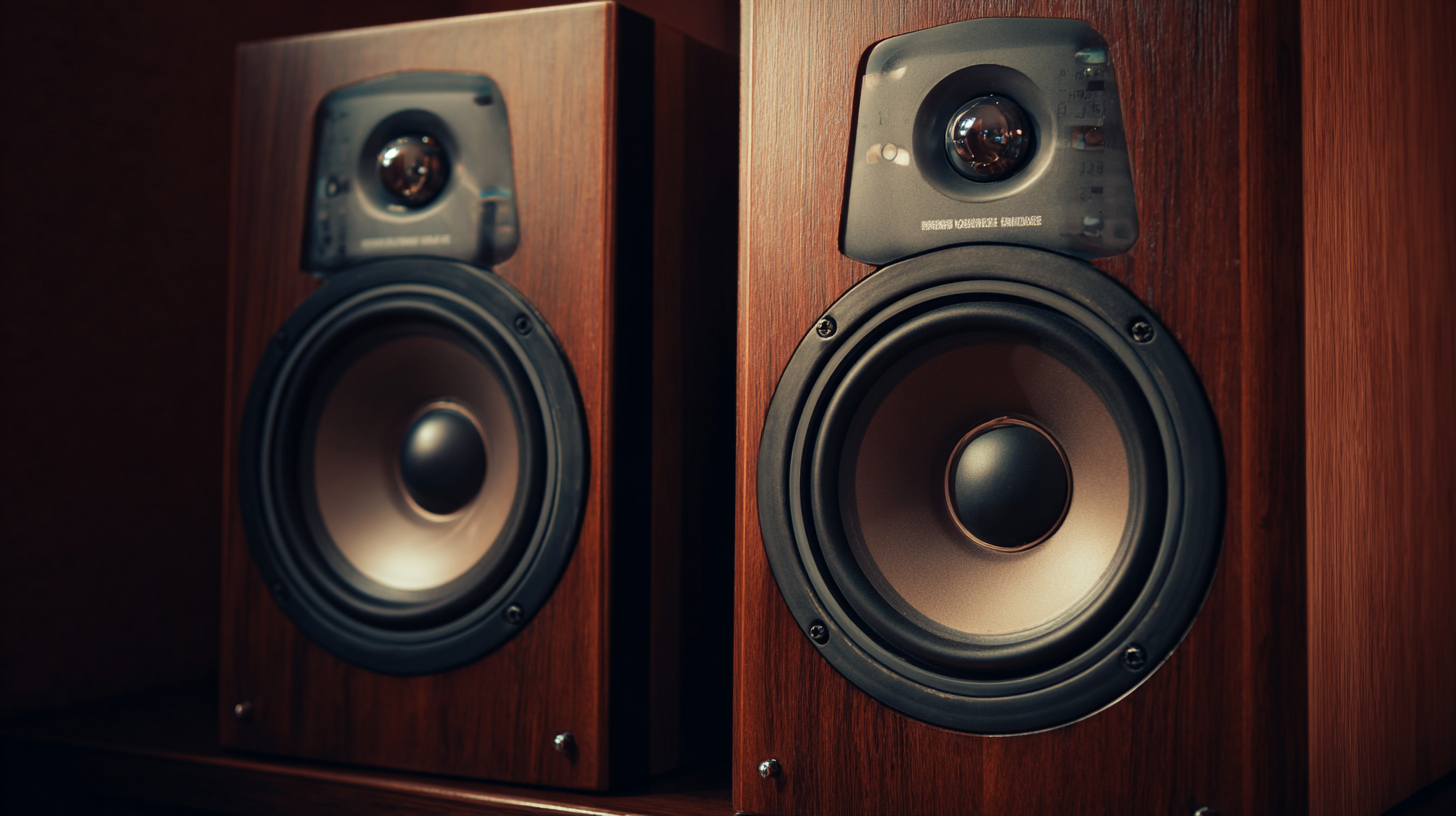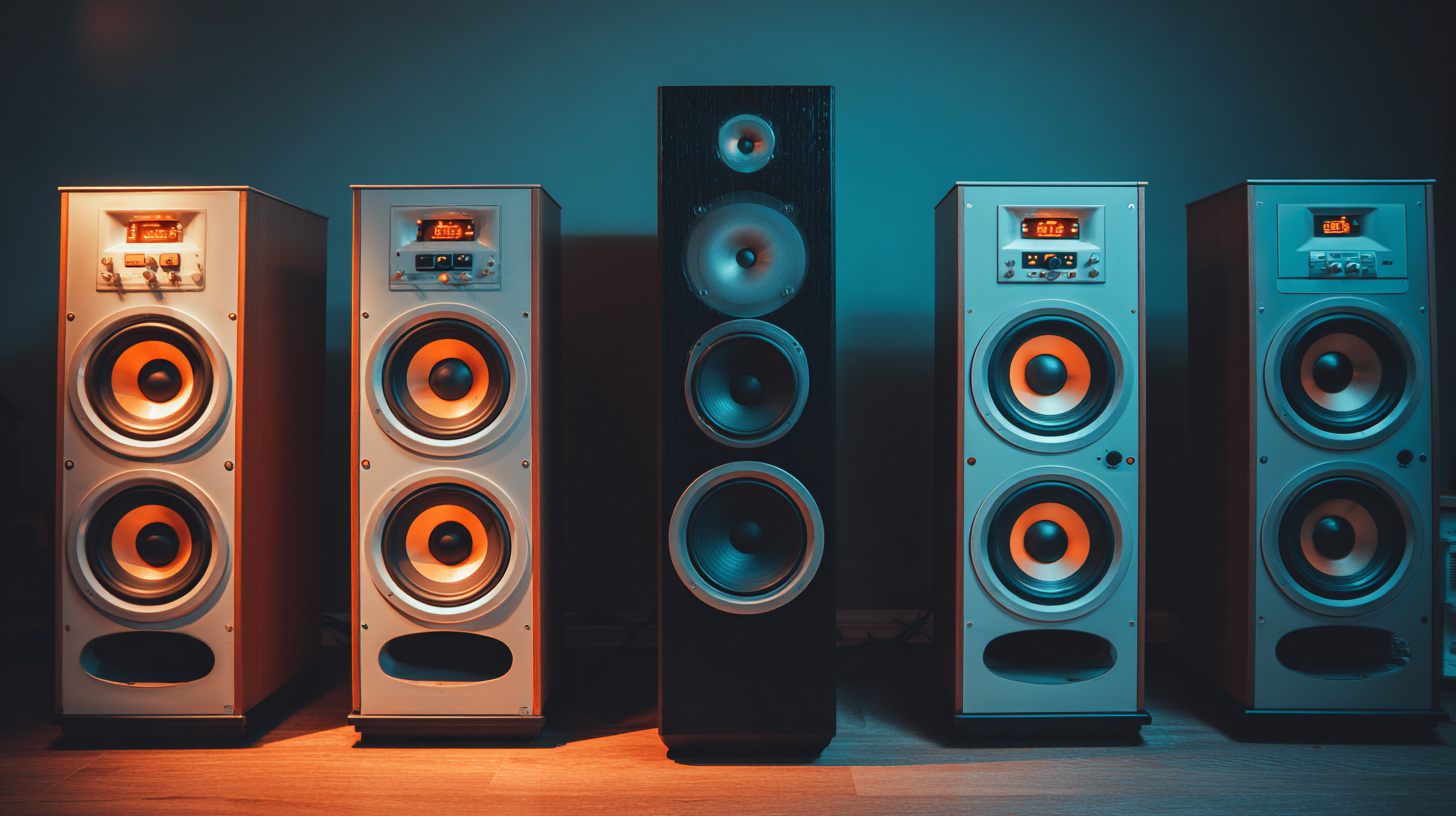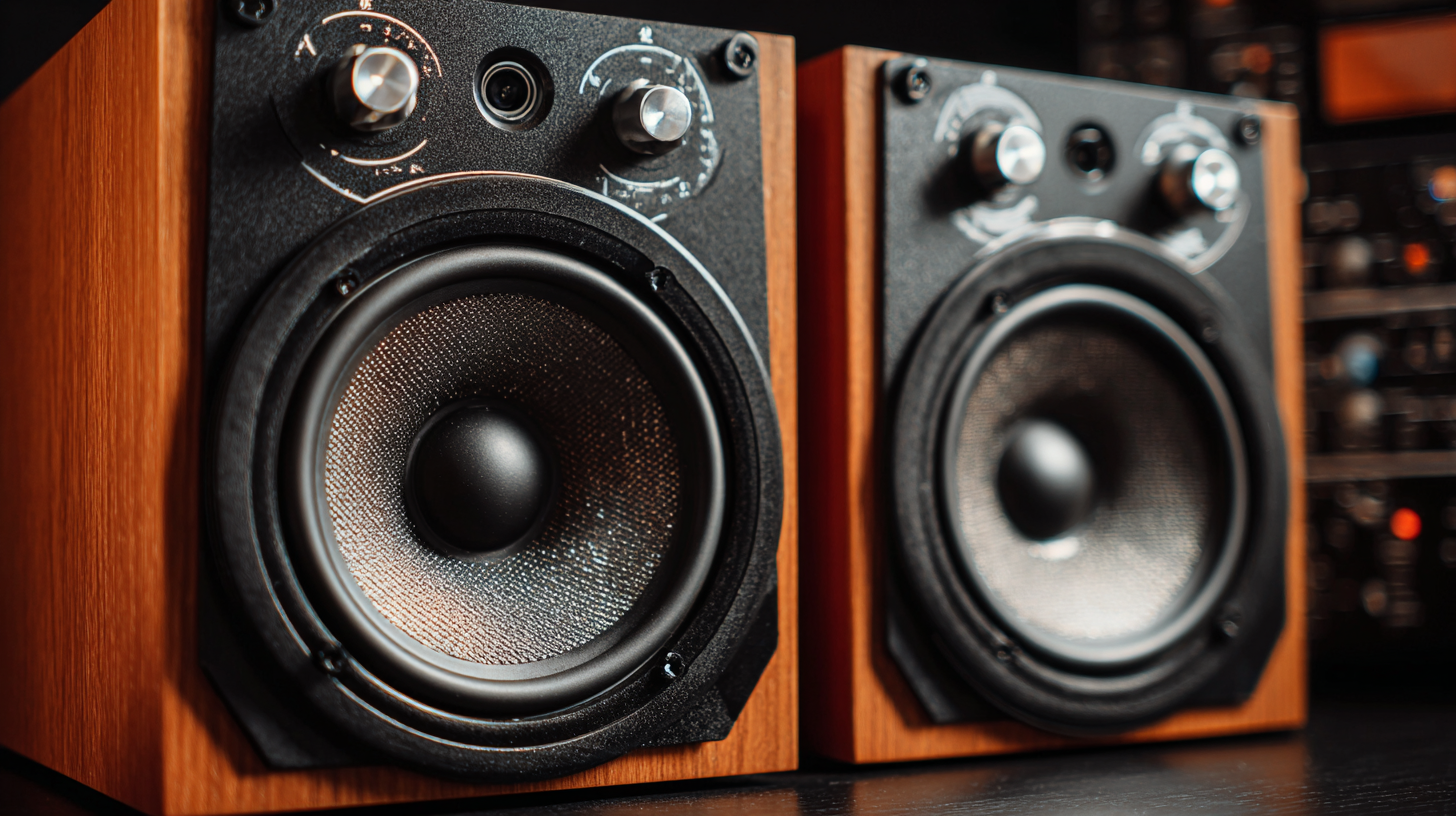How to Choose Component Speakers for Superior Sound Quality: Expert Tips & Insights
In today's competitive audio market, choosing the right component speakers can significantly enhance your sound experience. According to a recent report from the International Audio Journal, over 80% of audiophiles agree that high-quality component speakers are essential for achieving optimal sound clarity and depth. As music lovers increasingly prioritize superior sound quality, understanding the intricacies of component speakers has never been more critical.

Whether you are a casual listener or a dedicated audiophile, this guide will provide you with expert tips and insights on how to navigate the selection process for component speakers, ensuring you achieve superior sound quality that meets your personal preferences and listening environments.
Understanding Component Speakers: Key Features to Consider for Optimal Sound Quality
When selecting component speakers for optimal sound quality, understanding their key features is essential. First and foremost, consider the driver size. Generally, larger woofers (6.5 inches and above) produce deeper bass, while smaller drivers provide clearer, high-frequency sounds. A report by the Audio Engineering Society indicates that speaker frequency range is crucial—aim for a frequency response that covers at least 20 Hz to 20 kHz, which is the average range of human hearing. This ensures that you capture both the low and high end of audio clarity, resulting in superior sound quality.

Another significant aspect is the material used in speaker construction. High-quality materials like butyl rubber for surrounds and polypropylene or Kevlar for woofers enhance durability and sound reproduction. According to a survey by Sound & Vision magazine, over 65% of audiophiles noted that material quality directly affects the clarity and richness of sound.
Tips: Invest in a good crossover system to separate frequencies effectively between the woofer and tweeter. This will allow each component to operate efficiently without distortion. Additionally, consider the speaker’s sensitivity rating—speakers with a rating above 90 dB require less power to produce the same volume as those with lower ratings, making them ideal for a wide range of amplifiers.
Importance of Speaker Size and Configuration: How They Affect Overall Performance
When selecting component speakers, understanding the significance of size and configuration is crucial for achieving superior sound quality. Research indicates that larger speaker drivers, typically measuring 6.5 inches or more, can produce deeper bass frequencies, enhancing the overall listening experience. According to a study by the Audio Engineering Society, speakers with larger woofers (8 inches and above) can reproduce lower frequencies down to 40 Hz, which is ideal for genres like hip-hop and orchestral music. This capability allows for a fuller sound that smaller speakers often fail to deliver.
Configuration also plays a pivotal role in performance. Component speakers inherently separate the woofer and tweeter, enabling each driver to operate within its optimal frequency range. A report by Consumer Reports emphasizes that this separation allows for cleaner highs and reduced distortion, especially at higher volumes. Additionally, the use of passive or active crossovers further refines the audio output by directing specific frequency ranges to the appropriate driver, ultimately enhancing clarity and detail in sound reproduction. Selecting the right size and configuration not only affects the speaker's output but also can significantly influence the overall acoustic experience in your vehicle or home theater system.
How to Choose Component Speakers for Superior Sound Quality: Expert Tips & Insights
| Speaker Size (Inches) | Configuration | Frequency Response (Hz) | Power Handling (W) | Sensitivity (dB) |
|---|---|---|---|---|
| 6.5 | 2-Way | 50-20,000 | 60 | 90 |
| 5.25 | 3-Way | 45-22,000 | 50 | 88 |
| 6.75 | 2-Way | 40-20,000 | 100 | 92 |
| 8.0 | Coaxial | 35-20,000 | 120 | 89 |
| 4.0 | 2-Way | 60-18,000 | 40 | 87 |
Material Matters: Selecting the Best Materials for Enhanced Sound Clarity
When choosing component speakers, the materials used in their construction play a crucial role in sound clarity and overall performance. Tweeters, typically made from materials such as silk, aluminum, or titanium, significantly influence high-frequency reproduction. Silk is favored for its warm, natural sound, while aluminum and titanium can provide more detail and brightness. Understanding the properties of these materials allows you to select speakers that align with your listening preferences and the types of music you enjoy.

Woofers, on the other hand, also benefit from thoughtful material selection. Common materials include polypropylene, rubber, and various composites. Polypropylene woofers are lightweight and resistant to moisture, offering a balanced response across various frequencies. Rubber surrounds enhance durability and provide better control over movement, ensuring accurate bass reproduction. By considering the synergy between woofer and tweeter materials, you can create a more cohesive audio experience that delivers clarity and richness, enhancing the enjoyment of your sound system.
Amplification and Power Handling: Ensuring Your Speakers Can Perform
When selecting component speakers for optimal sound quality, one of the crucial factors to consider is amplification and power handling. High-quality speakers can only perform at their best when paired with adequate power. According to a study by the Consumer Electronics Association (CEA), mismatched power levels can lead to distortion and reduced longevity of the speakers. A standard recommendation is to ensure that your amplifier’s power rating closely matches the continuous power handling (RMS) of your chosen speakers, ideally within 20% of each other.
Tips for achieving this include choosing an amplifier that can deliver at least 75-80% of the speaker's RMS rating for balanced sound without clipping. Additionally, consider speakers with a sensitivity rating of 85 dB or higher to ensure they can produce sufficient volume with minimal power input. This helps in creating a more dynamic sound stage without overworking the amplifier.
Proper wire gauge is another vital aspect that impacts power handling. The American Wire Gauge (AWG) system indicates that for runs longer than 50 feet, using 14 AWG wire can minimize resistance and improve power delivery to the speakers. With these insights and tips, you can ensure that your audio system not only delivers exquisite sound but also maintains its performance over time.
Amplification and Power Handling of Component Speakers
Installation Tips for Component Speakers: Maximizing Sound Experience in Your Vehicle
When it comes to enhancing your vehicle's audio system, the installation of component speakers can significantly impact sound quality. Expert insights emphasize the importance of proper speaker placement and tuning to optimize the listening experience. According to industry reports, well-installed component speakers can boost clarity by up to 40%, creating a more immersive soundstage for drivers and passengers alike. Ensuring that each speaker is strategically positioned—such as installing tweeters near the ear level—can help achieve a balanced sound profile that accentuates higher frequencies while maintaining deep bass.
Additionally, the importance of quality components cannot be overstated. Research indicates that vehicles equipped with superior audio systems enhance the overall driving experience, with some studies showing that a robust sound setup can lead to increased driver satisfaction and decreased stress levels. Installing component speakers requires attention to detail, from managing crossover frequencies to sealing speaker enclosures properly, which all contribute to maximizing sound performance. Proper installation not only elevates acoustic quality but also extends the lifespan of the audio system, making it a worthy investment for any car audio enthusiast.
Related Posts
-

The Ultimate Guide to Choosing the Best Car Speakers for Your Driving Experience
-

Discover the Advantages of Upgrading to Component Speakers for Your Sound System
-

Ultimate Checklist for Choosing the Best Car Speakers for Your Sound System
-

Top Strategies for Enhancing Your Car Audio Experience with High-Quality Audio Systems
-

Exploring Unique Alternatives to High Speakers for Ultimate Sound Experience
-

8 Essential Tips for Elevating Your Car Audio Experience
